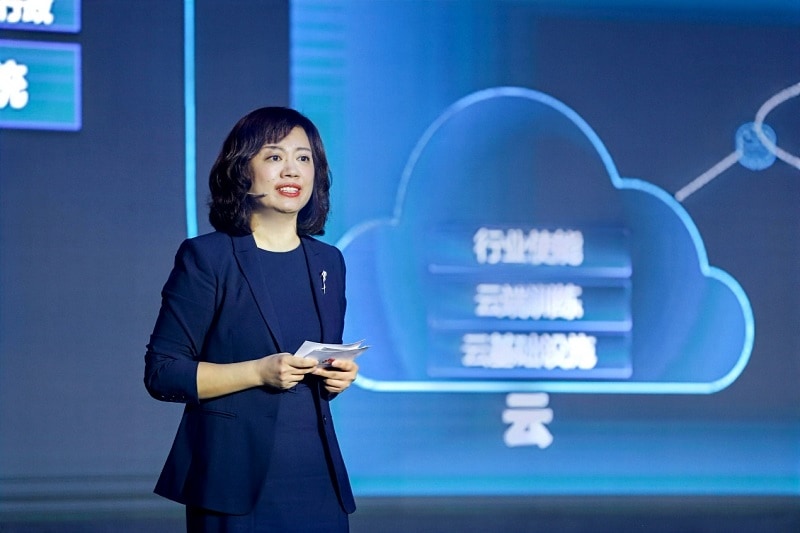[Shanghai, China, February 22, 2021] At MWC Shanghai 2021, Ms. Jacqueline Shi, Vice President of Huawei’s Cloud & AI Business Group and President of the Cloud & AI Marketing Dept., today proposed a reference architecture for telecoms carriers’ digital transformation. Speaking during the “5G Creates New Value” forum, Ms. Shi outlined a roadmap in her speech, “Taking Digital Transformation to the Next Level”, for how carriers can build a digital, intelligent infrastructure centered around full-stack data centers and clouds, and how they can take a phase-by-phase, multi-path approach towards full-scale digital transformation.
 Jacqueline Shi, Vice President of Huawei’s Cloud & AI Business Group and President of the Cloud & AI Marketing Dept.
Jacqueline Shi, Vice President of Huawei’s Cloud & AI Business Group and President of the Cloud & AI Marketing Dept.
“Digital transformation helps carriers to develop ubiquitous computing capabilities, especially cloud capabilities, and aggregate ecosystem to enable industry transformation. Huawei is willing to work with carriers and partners to light up the dreams of new industry, making the most of the unique opportunities of the digital era.” Ms. Shi said.
Data centers and clouds are at the heart of the reference architecture Huawei proposes, which aims to help carriers build a next-gen, digital, and intelligent infrastructure that enables them to build four core capabilities: digital operations, digital transactions, digital production, and digital innovation. On this basis, carriers can choose to migrate their business to the cloud phase by phase, based on different service needs and hierarchies. Expanding on this, Ms. Shi noted the following points in her speech:
- Innovative services are naturally cloud native. Huawei’s Cloud Native 2.0 stresses a move from “On Cloud” (simply deploying and running services on the cloud) to “In Cloud” (developing services and capabilities on the cloud using a cloud-native architecture), helping carriers develop, test, deploy, roll out, iterate, and operate innovative services on the cloud with agility.
- Carriers’ internal IT systems should be among the first to migrate to a public cloud. The business support system (BSS), operations support system (OSS), plus in-house services like video, IoT, 5G messaging, entertainment, and small-amount finance, can be migrated to the cloud phase by phase, after necessary redesign or change. Huawei’s intelligent enablement service helps carriers easily rewrite code and quickly implement SaaS. Application enablement and data enablement services help carriers seamlessly migrate applications and data.
- Carriers can choose to deploy networks in on-premises, full-stack data centers. The data centers have shifted from simple resource pooling to a full-stack, intelligent powerhouse. Huawei’s full-stack data center solution helps customers rebuild compute, storage, and the data center infrastructure as well as both software and hardware. The unified QingTian architecture and unified cloud management platform ManageOne help carriers unify the management of online and offline resources and also streamline online and offline ecosystems, delivering a seamless user experience.
With 30-plus years of experience in ICT infrastructure, Huawei has developed a deep understanding of carrier networks and business systems and their most urgent needs. It is based on this understanding that the organization proposed the reference architecture for and phase-by-phase, multi-path approach towards digital transformation. To help carriers stay at the forefront of digital transformation in this fast changing era, Huawei plans to continue leveraging an in-depth cloud-pipe-device synergy, helping them build end-to-end solutions powered by a robust ecosystem.
MWC Shanghai 2021 runs from February 23 to February 25 in Shanghai, China. Huawei showcases its products and solutions at booth E10, E50, and E90 in Hall N1 in the Shanghai New International Expo Centre (SNIEC). For more information, please visit https://carrier.huawei.com/en/events/mwcs2021
PR Archives: Latest, By Company, By Date